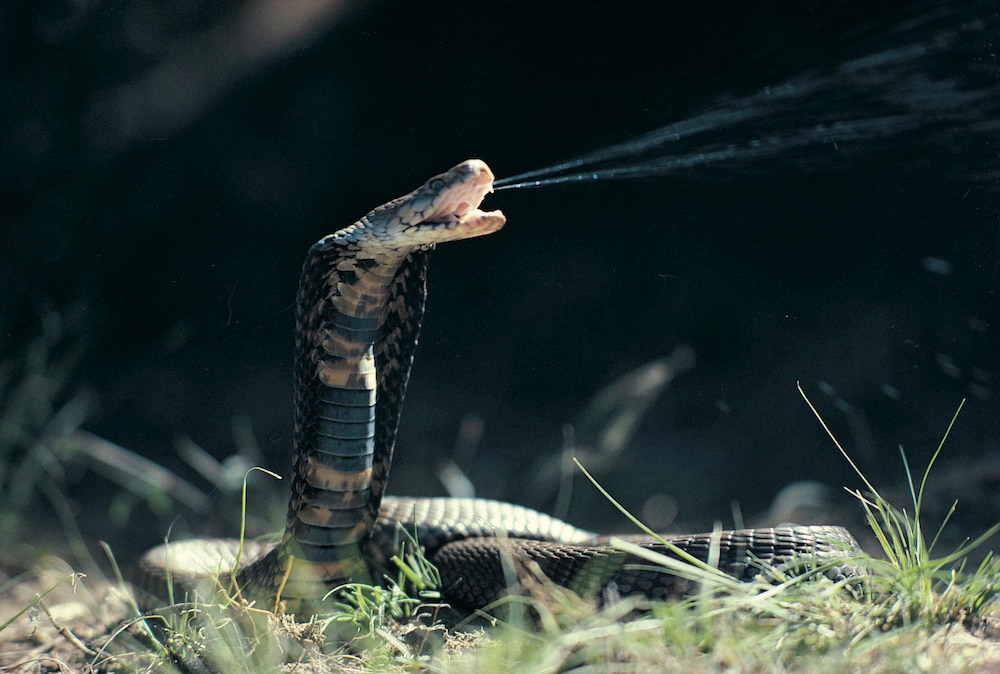Create a free profile to get unlimited access to exclusive videos, sweepstakes, and more!
Mutated microbes live inside snake and spider venom
Just when we thought snake bites couldn't get any worse...

Kung Fu Panda centers on the story of Po — voiced by Jack Black — and his journey toward becoming the Dragon Warrior, despite his apparent shortcomings. It’s perhaps unsurprising that among the Furious Five, Master Viper was the most welcoming to Po. She, herself, overcame an apparent lack when she was born without venomous fangs.
In the real world, being born without fangs would likely be a death sentence for some predatory animals. Snakes and spiders use fangs to deliver a cocktail of chemical compounds which paralyze or kill prey items, making them easier and safer to consume. In fact, venom is so good at its job, that it has long been thought that even bacteria can’t survive in its presence. New research, however, is challenging that notion.
Sterghios Moschos from the Department of Biomedical Sciences at the University of Westminster, and colleagues, gathered venom from snakes and spiders to see what might be living inside. Surprisingly, they found that some microbes have adapted, even over short periods of time, to live inside the venomous soup of a snake’s fangs. Their findings were published in the journal Microbiology Spectrum.
Moschos related a story about bacterial populations that will infect transcutaneous needles in hospital settings and travel up the line and into a bag of medication, even if it’s antimicrobial. He’d spent years working on finding compounds which might be useful in sterilizing needles to prevent microbial infections. He suspected something similar might be going on in snakes.
“To me, having done all this work about how bacteria can infect these needles, it was almost obvious. In a setting that’s dirty like a mouth, you have these fangs that are nice and warm and surrounded by nutrient space. Any bacteria would experience the evolutionary pressure of the venom but it’s like climbing up a hill. You might have obstacles, but eventually you get to the top of the hill,” Moschos told SYFY WIRE.
When they looked closely at snake venom, Moschos found that his hypothesis held up. There were, in fact, bacterial colonies living inside the venom. These bacterial species don’t appear to be native to the snakes. That is to say, they’re not passed from generation to generation and living in a symbiotic relationship. Instead, scientists believe snakes acquire bacteria through hunting activities and some portion of that bacteria adapts inside the mouth.
“There’s no such thing as a sterile mouth,” Moschos said. “If you’re a little squeaky thing and a big ugly snake comes along and bites you, you’re going to go into fight or flight. If you can’t escape, you want to fight and you’ll vacate all of the weight off your body, which involves defecating. That’s where these bacteria probably come from.”
Once inside the mouth, the bacteria are never made to leave. Snakes don’t brush their fangs and they don’t gargle mouthwash. The only real antibacterial compound they have access to is the venom itself. Any venom which gets into the mouth likely kills off a significant portion of the bacteria, but those that survive adapt to tolerate higher and higher concentrations of venom until they eventually travel up into the fangs to live in the venom itself.
“We observed that the bacteria did exactly that. We found genes that were clustering mutations. Venom will break open cell walls, but these mutations protected the cell walls. Other mutations had antitoxin peptides. Step by step, these bacteria have built defenses to stop having the venom attack them,” Moschos said.
The team took these bacteria species into the lab to see if protection against venom might just be an innate property or if they had truly adapted inside the environment of a snake’s mouth. They took bacteria gathered from snakes, as well as hospital isolates of the same species, and exposed them both to increasing concentrations of venom. The hospital isolates died right away while the bacteria from snake’s mouths survived.
Understanding this relationship between bacteria and venom could help doctors to treat snake bites in the future. Because it was thought that venom was sterile, any infections were believed to have been secondary to the initial wound. Now, we have reason to believe that an infection of the tissues might be a primary symptom of a snake bite.
“These bugs are coming from a really highly concentrated venom sample into the body. The venom is then very dilute, but the tissue is dead, there’s no immune cells to clear them up. These bugs are going to grow,” Moschos said.
Planning for those infections from the jump could help doctors get ahead of any infections before they grow out of control. We might also learn more about drug resistant bacteria and, hopefully, find novel ways to fight them. In order for bacteria to survive inside venom, they need to be resistant to not one compound, but a complex cocktail of compounds. Understanding how they do that could be the key to a new form of antibiotics.
“What we’re doing now is creating new antibiotics and asking the bacteria to pull up a helmet on top of every other piece of armor they already have. We’re kicking the can down the road. If we can understand the network effect, we might find a node we can attack that makes the whole set of armor fall apart,” Moschos said.
With any luck, studying microbes in a venomous, hostile environment will be the key to breakthroughs in modern medicine. Although, we might want to proceed with caution. Anytime, someone in the movies experiments with something called venom, it doesn’t end well.



























